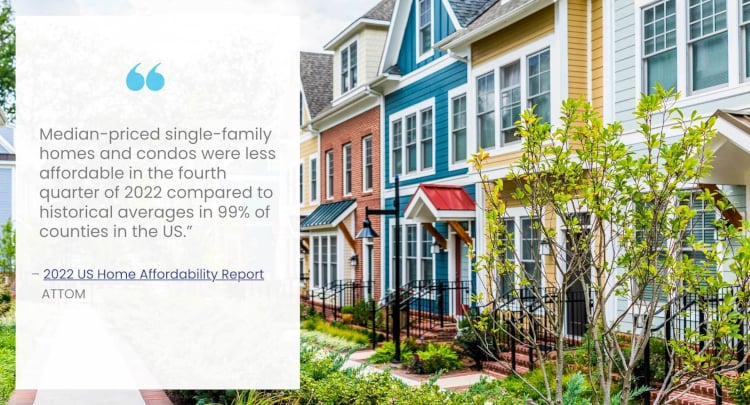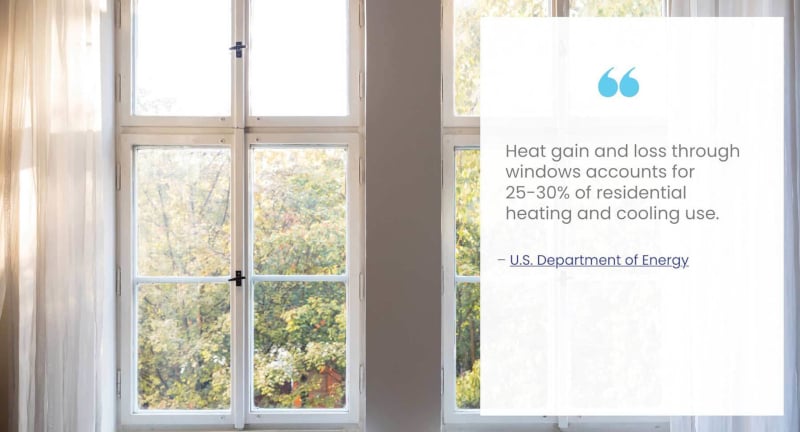According to the 2022 US Home Affordability Report by ATTOM, median-priced single-family homes and condos were less affordable in the fourth quarter of 2022 compared to historical averages in 99% of counties in the US. Moreover, major home-ownership costs now eat up 32% of the average national wage, the highest percentage in fifteen years.
With high interest rates, soaring property values, and inflation forcing the average home buyer out of the market, many real estate investors today have pivoted their investment strategy to focus on single family rentals. The problem is their rehab budget hasn’t pivoted. Many flippers are using the same approach to rehab rentals as they would a flip—to the detriment of their ROI.

Here are some things to consider when budgeting to flip vs. hold.
Rehabbing Fix and Flips vs. Rehabbing Rentals
Every budgetary concern with your flip needs to align with your exit strategy. It’s not simply about rehabbing too much or too little (although that’s part of it); It’s about choosing upgrades that align with your ultimate goal, to flip or hold. Buyers and renters evaluate and use your property differently, so every decision you make—from which rooms to prioritize, to landscaping, appliances, and finishes—needs to take their perspectives into account.
Buyers and Renters Want Different Upgrades
Buyers typically see themselves in their homes, which means that on some level, the home needs to dazzle and delight them. Curb appeal matters. Your budget needs to reflect a focus on first-impression makers: healthy landscaping, fresh paint, and updated kitchens and bathrooms. Think shiny and new. Buyers are also typically less forgiving than renters because when they buy a flipped property, they want a turnkey home without DIY updates required.
This is why, up front, your rehab budget for a fix and flip will likely be higher than a fix-and-hold. That water heater with only two more years of life left won’t matter to a renter because they know the landlord will be on the hook to fix it when it breaks. Homebuyers, armed with inspection reports and appraisals, are infinitely more scrupulous of such details.
Renters appreciate curb appeal and updates just like buyers, but they’re not as acutely focused on quality and finish as they are convenience and functionality... Since their stay is temporary, they don’t have the same emotional reaction to the property. Renters want everything in the home to work without fail and can forgive things like odd layouts and clean-but-dated shower tile.
Prioritize Durability for Rental Improvements
Rental properties are subjected to more wear and tear than owner-occupied homes. Frequent move-ins and pets can damage walls and floors, and tenants are less invested in the upkeep of your property because, simply, it’s not theirs. It’s in your best interest to choose materials and finishes made to withstand heavy use. After all, you are the one footing the bill when they wear out. Choose low-maintenance materials like vinyl plank flooring, quartz countertops, and higher-gloss, textured paint that hides scratches and cleans easily. Note you also need to ensure your property passes all safety regulations.
When improving a house flip, on the other hand, you can get away with more aesthetically pleasing materials and finishes that are less durable, since the property will be owner-occupied. But don’t go overboard here. There’s really no place for crown molding and granite counter tops in a flip. Think satin finish paint, new fixtures, and high-quality laminate flooring.
Focus on ROI
A rental property is a long-term investment, so you'll want to make updates that will provide a good ROI over time. The average American home racks up $2,000/year on home energy bills, much of which is wasted through drafty windows or ducts, ineffective heating and cooling systems, and appliances past their prime. Green upgrades like double-paned windows, insulation, and energy-efficient appliances are both great selling points for renters and a way you can save money yourself when the unit is unoccupied. Look for windows with the Energy Star and NFRC labels.

For a flip, the big-ticket ROI-boosting improvements center on the kitchen and bathrooms. Kitchens have changed dramatically over time. It used to be a kitchen was seen as a strictly utilitarian space, tucked away. Today, kitchens are a social space. If you’re gutting and replacing the cabinets in an older home, take a minute to consider the possibilities of a more open layout. An inviting kitchen island might just sell the house. Pay special attention to the master bathroom: two sinks are always better than one, and updating fixtures will get you a high return for a relatively low investment.
Financing Differences
This might be obvious, but a long-term rental property loan and a house flip loan are not the same. Flip loans are on a much shorter time frame. For example, our fix and flip loan term is nine months. Meanwhile, a long-term rental property loan can go up to 30 years. (Residential Capital Partners offers 5/1 ARM, 7/1 ARM, and 30-year fixed rate loans). The benefit of a rental property with a long-term loan is that your property covers the carrying cost of the home while it appreciates over time, and with each passing year, you have the opportunity to increase the rent thereby increasing the cashflow or mailbox money that is coming to you.
Whichever loan you’re getting, thoroughly vet your private lender. When the market is turbulent, you need a lender that won’t leave you at the table.
Avoid Overspending on Improvements for Any Property
Buyers and renters expect your property to meet the standard for the neighborhood. Period. It’s advisable to ever so slightly exceed that standard to sell or rent out your property faster. Go back to your comps. Do comparable properties in the area all have central air? Get central air, then throw in a ceiling fan or two to sweeten the deal.
Of course, it’s easy to get caught up in the excitement of a rehab and lose sight of your budget. Follow these best practices to avoid eating into your profits:
Set a Budget. Stick to It.
Keep your rehab budget below 35% of the total cost of your investment. If you can’t do that to meet the standard for the neighborhood, you are subjecting yourself to a renovation versus a rehab. When a rehab becomes a renovation, the rehabber loses through a process called “death by a thousand cuts.” Allocate funds within your budget for unexpected expenses—sure—but don’t overextend yourself financially, become cash-strapped, and jeopardize your ability to complete the project.
Don't Skimp on Quality
If you must sacrifice something to stay on budget, don’t make it quality. Cheap materials and shoddy workmanship can come back to haunt you, either in the form of repairs or decreased interest in your property. Get a quality cleaning, too. No one wants to rent or buy a property with mildew in the shower or dust clouding the light fixtures.
Research and Negotiate
Instead of cutting corners, take the time to shop around for the best prices on materials, and reuse good contractors on similar properties moving forward. Hire contractors who offer competitive rates without sacrificing quality. Negotiate with them for an even better deal. Rehabbing multiple properties? Ask the contractor for a multi-property discount.
Hold Yourself Accountable
With strategic budgeting, your rehab will increase your flip’s value and get it sold or occupied by a renter faster. Rehab and market rental properties wisely. As you know, in the house flipping business, time is money, and any time your property is unoccupied is cash down the drain. By putting yourself in your buyer or renter’s shoes, setting an appropriate budget, and negotiating for the best deals on materials and labor, your rehab will be worth the hard work.

Flip vs Rental Rehab Budge Comparison Chart
You're far more likely to reach your budgetary goals when your strategy is staring you in the face. Download our free Flip vs. Rental Rehab Budge Comparison Chart to help formulate a budget that will give you the best ROI.



